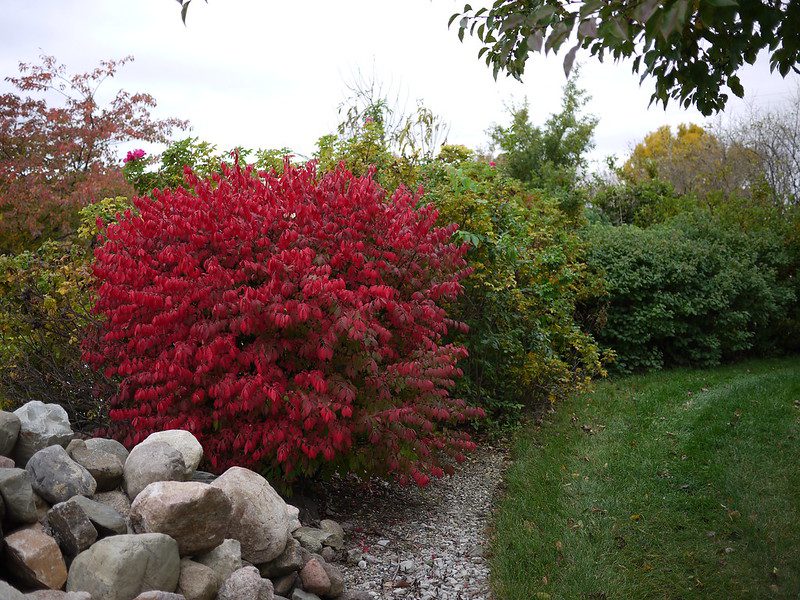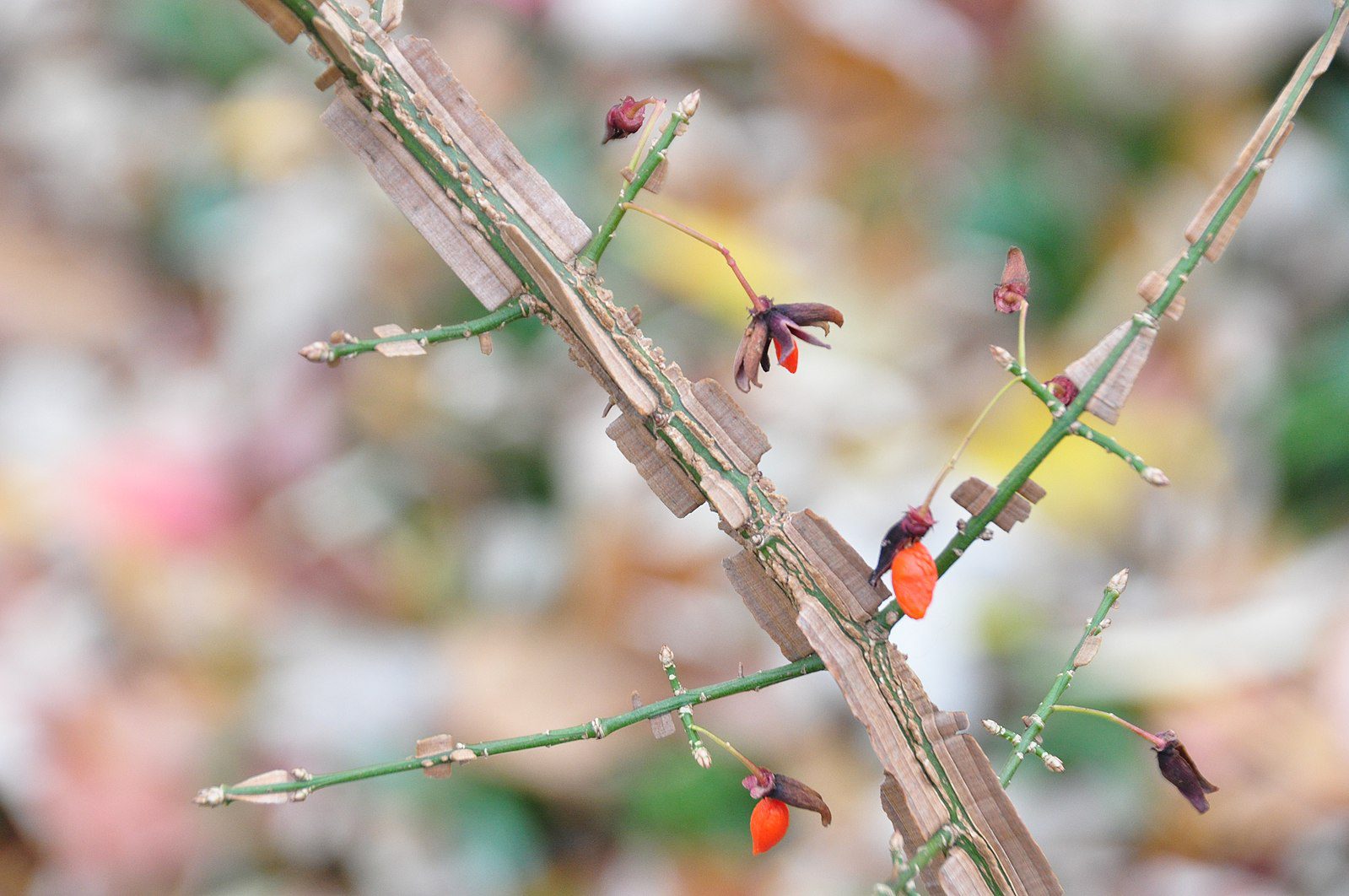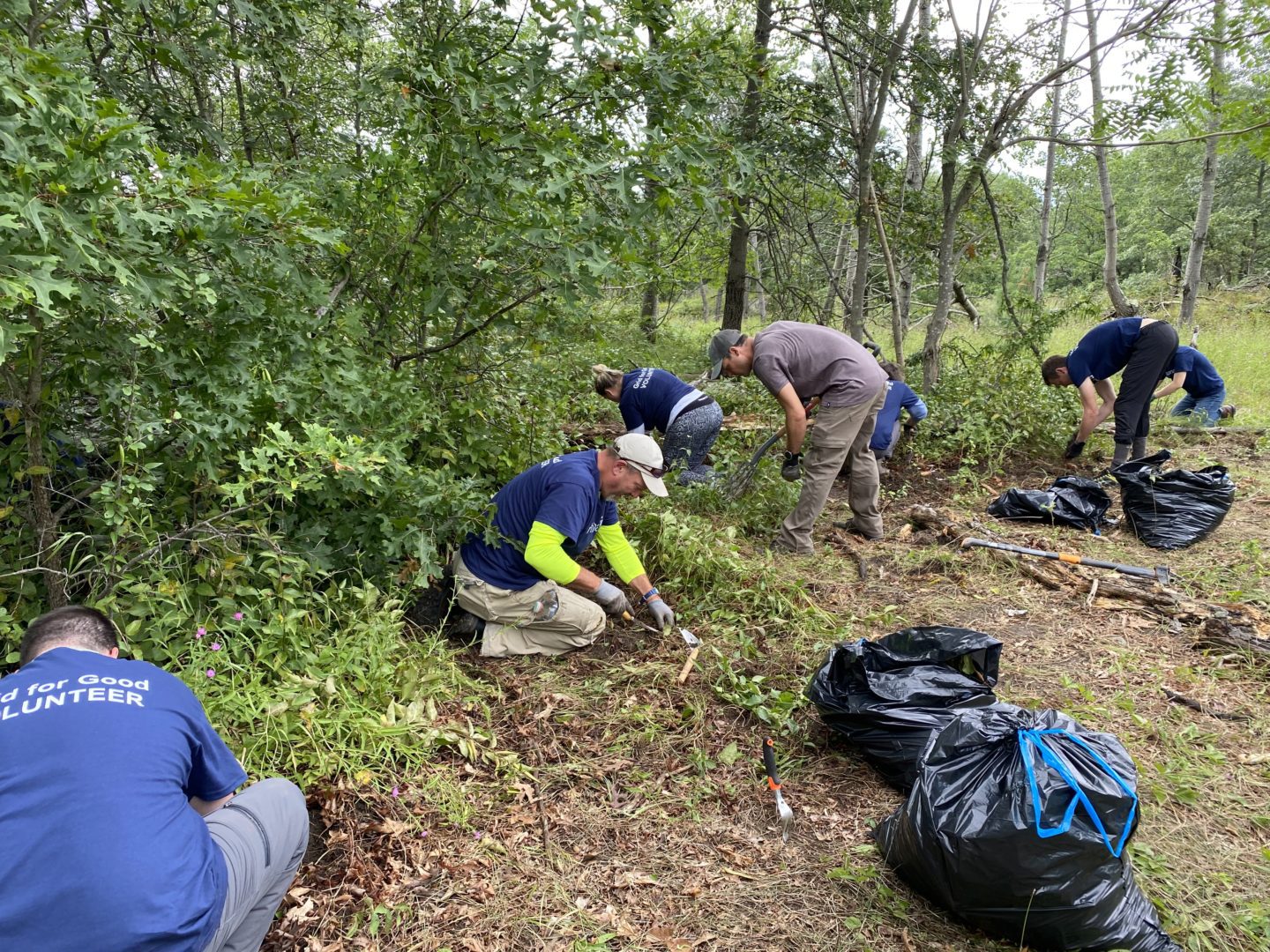National Invasive Species Awareness Week (NISAW) is February 26 to March 3, 2024.
To recognize NISAW, we will be releasing a blog post every day this week on a different invasive plant species commonly found throughout the Fells.
Invasive plants are non-native plants that were introduced to our area from another region of the world. The elements that kept the non-native plant populations in check in its home region (e.g. disease, competition, predators) are no longer present once they are introduced to this new region. This means that the plant can grow out of control, rapidly outcompete native plants, and threaten native biodiversity. This threat to our native habitats and biodiversity makes management of invasives all the more important.
Read on to learn more about our first invasive plant of the week: Burning bush.

Burning bush (Euonymus alatus)
It can be hard to see why certain plants were brought over to North America, but burning bush isn’t one of those mysteries. Introduced in the mid-1860s, the woody shrub’s leaves turn a beautiful bright red in the fall, making it an attractive landscaping plant.
Along with its bright red leaves, burning bush has unique corky wings on its stems, which is where its other common name “winged euonymus” comes from. These wings make it easier to identify during the winter months after its leaves have dropped. The shrub also produces red berries that ripen in the fall and can remain on the stem throughout the winter.
Invasive plants are often found in disturbed areas, and burning bush is no exception. In addition to disturbed areas, burning bush does well in open woods and is shade tolerant. It can leaf out under a mature canopy while simultaneously blocking sunlight from reaching plants on the forest floor, and its ability to form dense thickets and crowd out native shrubs and seedlings makes it even more of a danger to our native plants.

Like other invasive plant species, burning bush has no natural predators or browsers to keep its population in check. The only part of the plant that an animal will eat are the seeds, which is its main vessel for spreading. Birds tend to eat the seeds and then disperse them far away from the original plant.
Join us tomorrow to learn more about our next invasive plant: Asiatic bittersweet.
Want to help us combat invasive plants like burning bush? Join us for a volunteer day by signing up on our calendar here!
